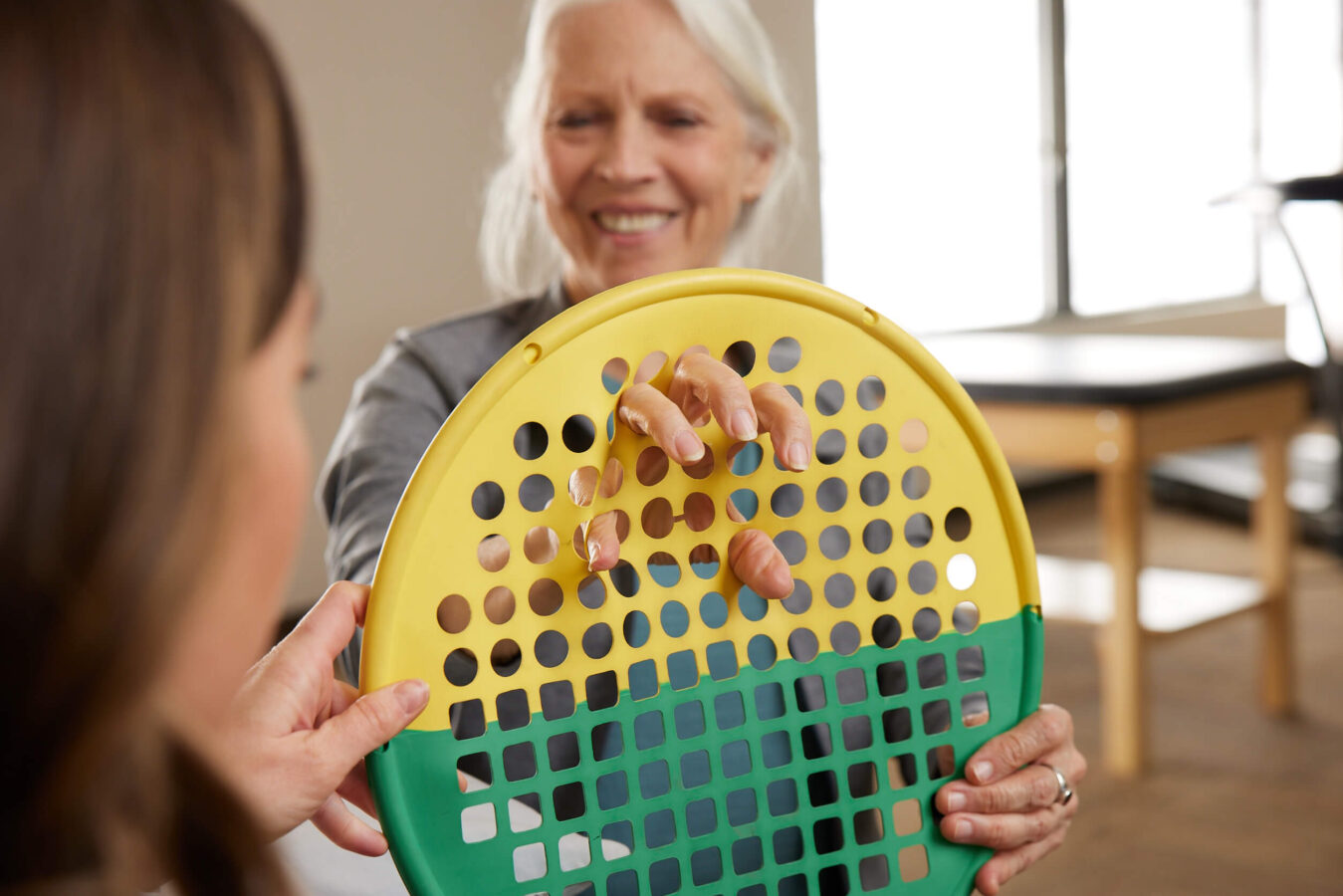
Medically reviewed by Grace Mollohan
Motor skills are basic movements that utilize the body’s muscles to perform a specific task. They require the brain, nervous system, and muscles to function together seamlessly. Throughout development we learn basic skills first, and then build upon them to complete more complex tasks. Practice and repetition help us perform motor skills with accuracy and efficiency.
Motor skills delays or impairment can occur for a variety of reasons in people of all ages. However, it is often possible to improve motor function with physical therapy and occupational therapy.
There are two types of motor skills. They differ based on the size of the movements and the muscles used to produce them.
Gross motor skills are whole-body movements, like running and jumping, that utilize larger muscle groups like the arms, legs, and torso. They require coordination of the muscles and the neurological system and are lined to other abilities like physical strength, reaction time, balance, coordination, and body awareness. Gross motor skills are the basis of smaller fine motor skills.
Fine motor skills are more precise movements that involve small muscle groups particularly of the eyes, lips, tongue, wrist, and hands. Examples include picking up a small object, turning the pages of a book, or threading a needle. Fine motor skills are essential for doing all of the tasks that make up our day like dressing, grooming, and eating.
A person’s ability to perform fine or gross motor skills can be affected by wide range of causes and conditions. Some commonly affect children, while others can impact individuals of all ages and stages of life.
Conditions that may impair motor skills include:
Difficulty with motor skills may be a sign of an underlying condition that requires treatment. It’s important to discuss your symptoms with your provider to obtain an accurate diagnosis and follow the appropriate course of care.
Now let’s look at a few examples of fine and gross motor skills for different ages.
Keep in mind, every child is unique and develops on their own timeline. These milestones are general guidelines. There is no need to panic if your child isn’t hitting them within these age constraints. However, it’s important to monitor delays to ensure they receive the proper support, whether that is early intervention with physical therapy or another course of treatment.
Many motor skill delays can improve with exercise and play activities focusing on the activities that build neural pathways to acquire and build new skills.
Yet some children require more intensive physical therapy or occupational therapy to learn these skills and build their confidence and independence. In some cases, children need to relearn skills that have diminished due to injury or illness.
Physical therapy and occupational therapy are used to improve motor control and motor learning using evidence-based, age-appropriate techniques. Therapy starts with an initial evaluation to assess the child’s strengths and weaknesses.
From there, the therapist creates a personalized treatment plan to gain the necessary skills. Physical therapy generally focuses on the larger movements, or gross motor skills. Physical therapy for gross motor skills might include:
Occupational therapy focuses on smaller, more precise tasks, helping children with mobility, strength, endurance, tool use, and the manipulation of objects.
An occupational therapy treatment plan may focus on:
While these skills may seem and sound a bit technical, therapy for children of all ages is cleverly disguised as fun. The child placing coins in a bank may not realize they are working on their visual motor coordination.
Pediatric therapists know how to connect and get results through games and activities that engage and encourage younger patients. Puzzles, sidewalk chalk, and even peeling and placing stickers are simple but effective activities to improve fine motor skills.
“Use it or lose it” is a common saying that underscores the importance of staying physically active to maintain function. In older adults, physical therapy plays a crucial role in preserving motor function by focusing on exercises that target strength, flexibility, balance, and coordination. As we age, motor skill performance tends to decline. Yet research shows that our motor learning ability does not.
Older adults are capable of improving these skills. Activities that can help adults improve fine motor skills include: gardening, baking and cooking, puzzles and games, knitting and crocheting, and making jewelry. To improve gross motor skills, try climbing stairs, walking, water aerobics, yoga, dancing, and riding a bike.
Although you can do a lot of activities on your own to maintain your body, at some point you may require the assistance of a physical therapist or occupational therapist to address symptoms related to aging, an injury, illness, surgery, or a chronic condition. .
Physical and Occupational therapy play a crucial role in helping older adults sustain and even improve their motor function by providing tailored exercises to target strength, flexibility, balance, and coordination.
Through these targeted interventions, therapists help individuals maintain muscle mass, joint mobility, and overall physical independence. By engaging in these exercises, older adults can counteract age-related declines, enhance their quality of life, and reduce the risk of falls and injuries, ultimately supporting their long-term mobility and well-being.
To learn more about how to improve motor skills at any age, find an occupational therapy or physical therapy clinic near you.
External Sources: